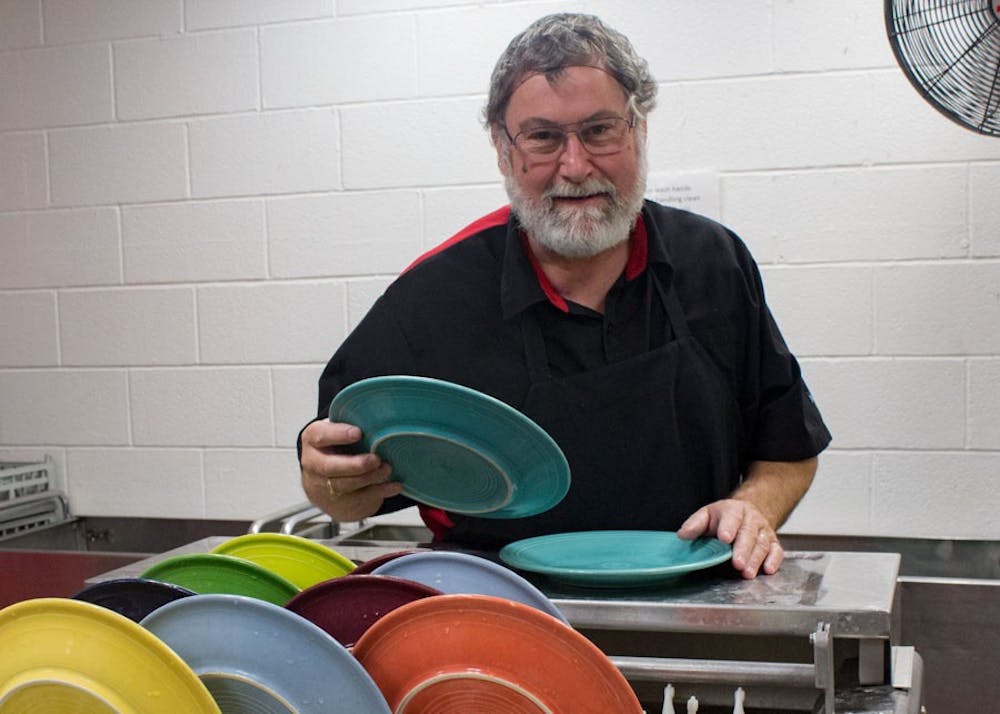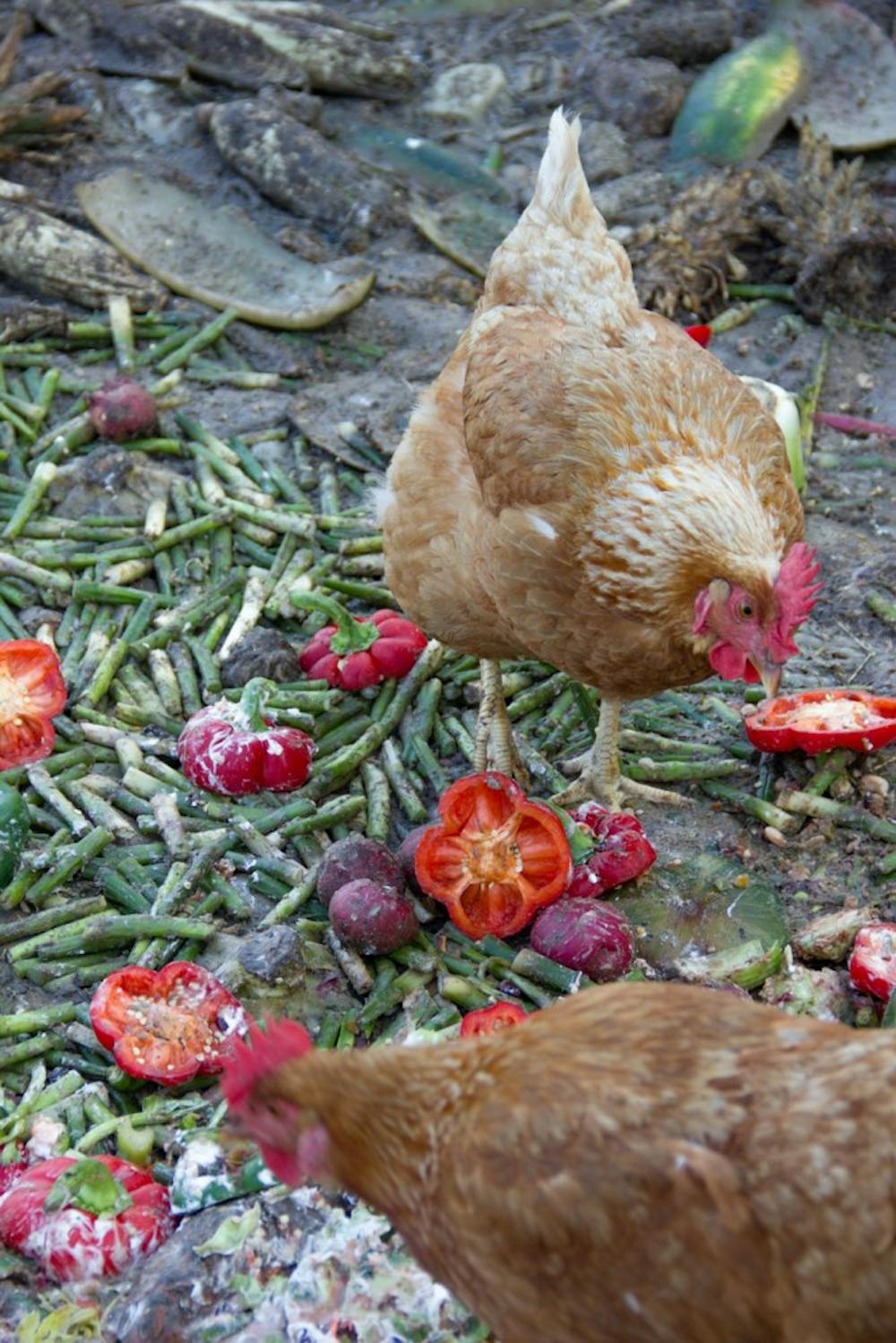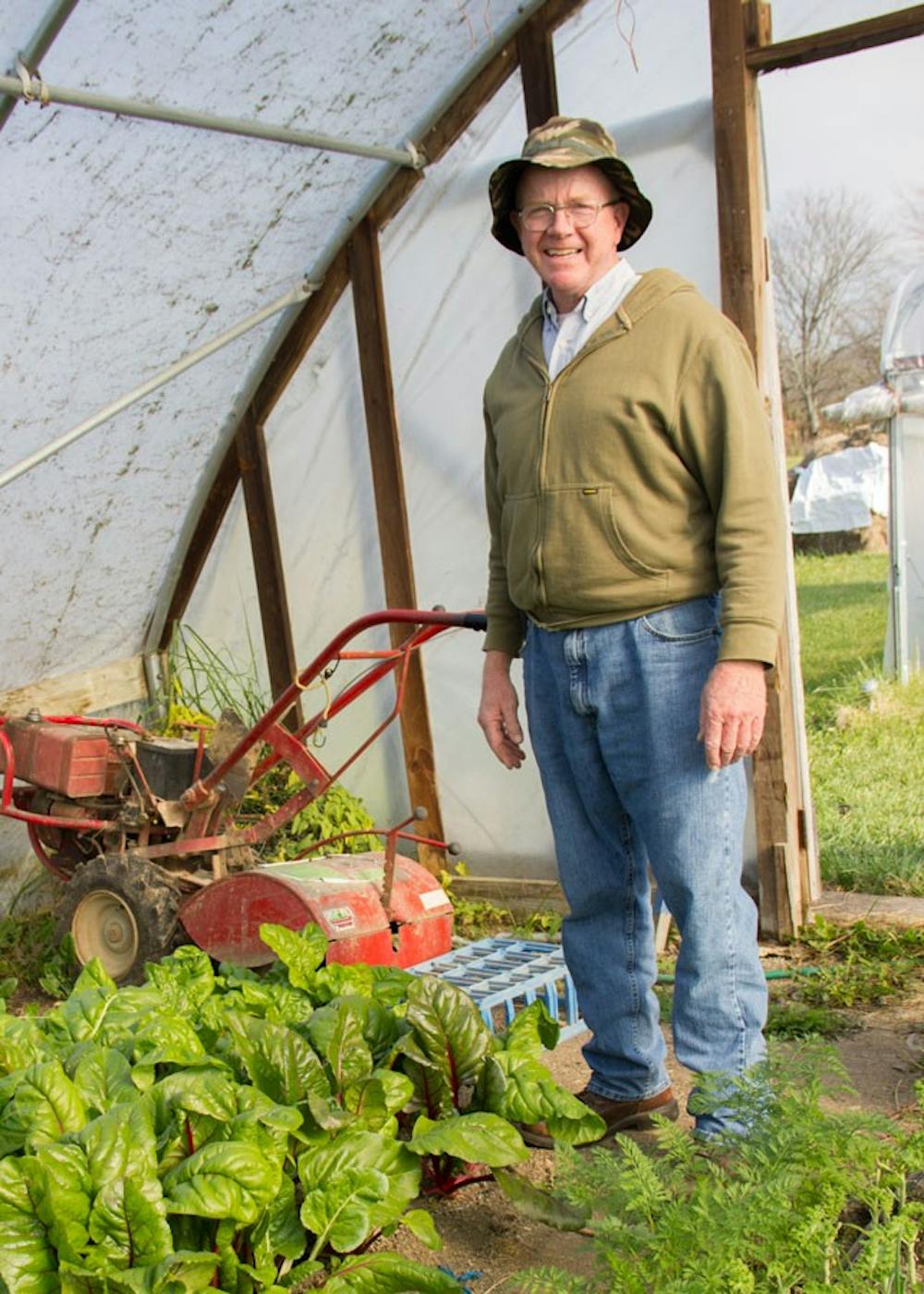By Becca Robb | Echo
This is the second in a series of four articles researching environmental sustainability on campus. Topics include electricity, water, food and material waste.
Before lunch
As the bell tower tolls 11 a.m., students begin trickling down the stairs of the DC. Some rush into the lines at Homestyle. Others frequent Nourish.
But what many students don't see are the routines of the people behind the walls of the kitchen.
Serving about 2,600 people every day, the DC employs a kitchen staff of 42. Employees share a sense of camaraderie-they poke fun at each other and laugh about the events of the day.
"It sometimes can be taxing, but I love my job," Paula Hayes, special diets cook, said. "I love the kids I cook for."
Lewis Suttles, an employee with a round face and sharp humor, hovers over an 80-gallon kettle of lemongrass chicken broth for Dashi Noodle Bar. The sweet and tangy aroma wafts throughout the kitchen.
"I wouldn't normally eat these ingredients on their own," Suttles said, motioning toward bottles of red chili and fish sauce. "But once I put them together, it's good."
During lunch
Back in the dining room, students place their finished dishes on the conveyor belt, flinging their silverware into the food-splattered metal chutes. The silverware drops from the chutes into metal baskets in the dish room. In the past, forks have flown down and smacked employees on the arms while they retrieved the silverware. Now, they stand back a safe distance and pull the baskets out with a long metal arm.
The conveyor belt snakes around the corner, rattling the dishes into the dish room like an old train. Beneath the conveyor belt, a stream of murky water resembling watered-down chocolate milk gushes through a trough.
An employee grabs each dish and rinses the food, napkins and liquids into the frothy brown stream. An uneaten slice of french toast floats down the stream and into the pulping machine on the left. The pulper digests all the plate waste, spitting out a mostly dry compound that looks like pink insulating material. The machine reduces the final solid material by 80-90 percent, which ends up, along with the rest of campus waste, at the Jay County Landfill in Portland, Indiana.
Joe Baxter, a grey-bearded employee with focused brown eyes, has worked at the DC for five years. He said he sees an amazing amount of plate waste coming down the conveyor belt.

"I stand over here and watch the cooks cut the tops off of strawberries," Baxter said. "They'll spend two or three hours. Then people will take half a plate of strawberries and they'll only eat a handful of them."
After rinsing dishes in the stream, employees run everything through the dishwasher, a massive metal contraption reminiscent of Willy Wonka's gobstopper machine. Baxter handles the plates with a learned apprehension-the hot ceramic will scorch his fingers if he holds it too long. He stacks the plates into neat piles and brings them back into the dining room.
A bright green plate coming out of the wash has a smudge of crusted broccoli stuck to it. Baxter spots the blemish like a hawk hunting for field mice. He plucks it off the conveyer belt and tosses it onto a tray with other rejects.
"You didn't even think I was lookin' at 'em, did you?" Baxter said. An employee will have to wash the dish by hand with a scrubby brush.
After lunch
Junior Esther Koh said she doesn't waste much food at the DC. When she does, it's because she's served herself a lot, thinking she'll enjoy it, but then the meat is tough and she doesn't want to finish it. Koh works in catering and says the DC has to throw away a lot of food because of health regulations.
Director of Dining Services Matt Riley says the DC tries to redeem as much food as possible. They chop up leftover chicken and make it into chicken salad or soup. But after they cook anything a second time, they must throw it out due to health regulations. However, sometimes employees can eat these leftovers and many of the kitchen scraps feed animals at local farms.
In one metal pan lays red, green and yellow bell peppers. As employees slice up the peppers, they toss the seeds and stalks into white buckets sitting on the tile floor. Later tonight, Terry Himelick, farm manager at Victory Acres, will drop by in his scratched-up maroon pickup and haul the buckets back to his farm.
Himelick feeds the kitchen scraps to his chickens and hogs. At his farm, a hen pecks lazily at a pile of spring rolls lying in the dirt. Heads of bell peppers lay sprawled around the chickens. He accepts any scraps, excluding meat, from kitchen prep and food the DC can't serve due to health regulations.
Himelick values Taylor's food scraps for the compost benefit. The vegetables and grains enrich the animal manure he mixes with hay and leaves to craft his compost.

"Whatever is good for the animals is good for the soil," Himelick said. His goat, James, particularly likes musk melon and pineapple tops.
But farms can't take the plate waste that students place on the conveyor belt. Anything edible that students place on the conveyor belt becomes pulp and ends up in the landfill.
Last May, a student nutrition project saved all the conveyor belt plate waste from a single day and weighed the results. They measured 395 lbs of wasted food. This means each student wasted about half a chicken breast, or .395 lbs, because the DC served only 1,000 students that day.
Frederickson said students often take the DC for granted.
"(The project) made me a lot more aware of not just what I'm eating, but what I put on my plate," project leader and junior Amy Frederickson said. "(People will) say, 'Ah, there's nothing to eat today.' But there's beauty here and that attitude should trickle down to our food."
She suggested beginning a program where freshmen are required to scrape plates in the DC for one meal.
The student nutrition group pointed out people often think they can eat more than they can. They recommended several tips for reducing food waste: using smaller plates, taking smaller servings and coming back for seconds.





